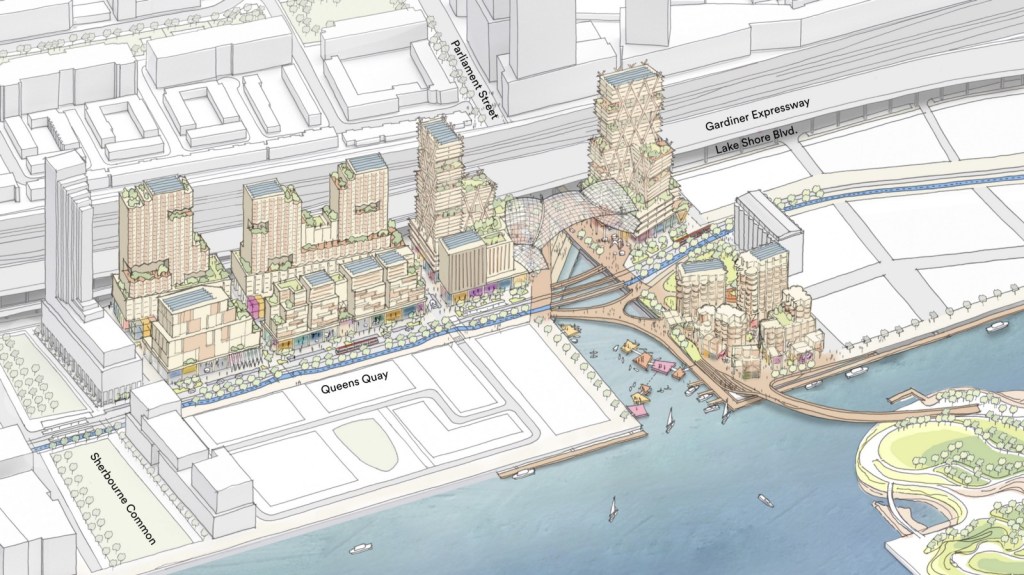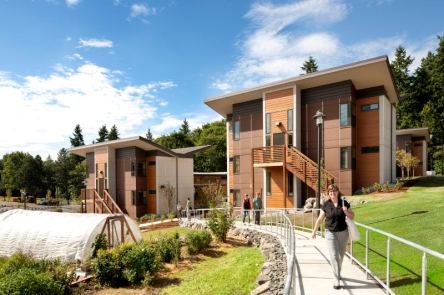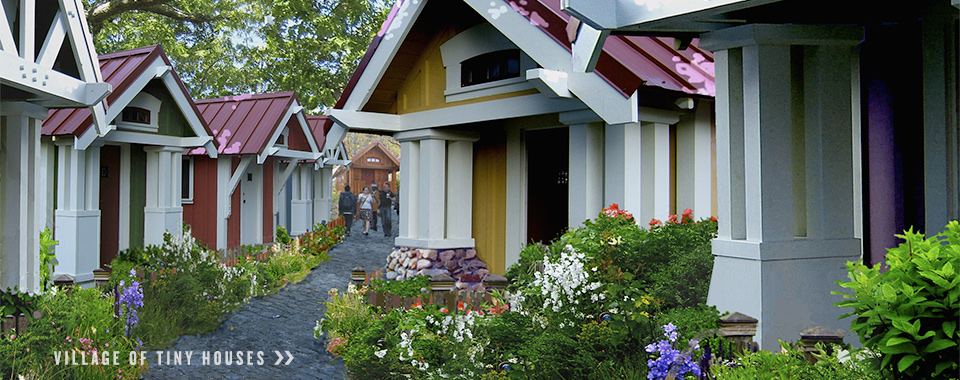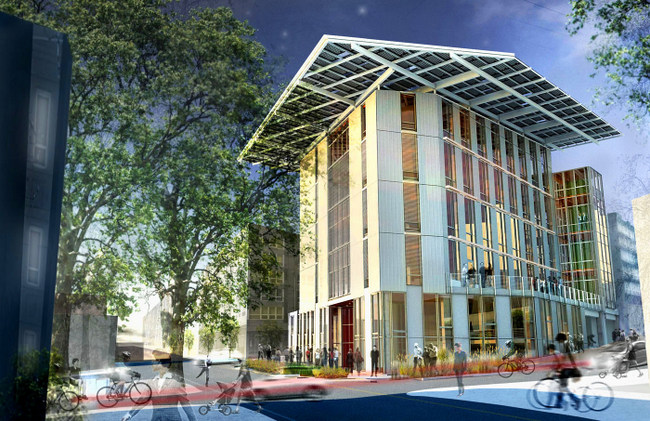The buildings sector accounts for about a quarter of Canada’s total final energy consumption and approximately 15% of greenhouse gas (GHG) emissions when emissions are associated with electricity used in buildings, according to Efficiency Canada. Canada’s buildings, which require both heating and cooling, are particularly reliant on energy use, which in most cases produces carbon. The government has committed to cutting the country’s greenhouse gas emissions by 40-45% below 2005 levels by 2030 and is set to achieve net-zero emissions by 2050. Attaining these goals will require all sectors, including property management, to gain a clear understanding of their energy performance. That makes ESG a megatrend “that will continue to have a transformative impact on the industry,” says Richard Joy, executive director of Urban Land Institute Toronto. Gaining a deeper understanding of energy performance and how to improve it in 2022 will require real estate professionals to perform more energy benchmarking and better tracking of their buildings and portfolios’ energy performance. Leveraging accurate energy consumption data helps property owners confidently compare their performance against their own standards and others in their sector. Accessing this information in real time drives informed decision-making about productive building improvements and investments. “Technology and data analytics can assist with analyzing opportunities of growth and making better-informed investments,” notes Frank Magliocco, national real estate leader for PwC Canada. GRESB drives ESG insight A key resource for detailed energy performance information is the Global Real Estate Sustainability Benchmark (GRESB), an organization that benchmarks real estate assets’ environmental, social and governance (ESG) performance and provides standardized and validated ESG data to the capital markets. GRESB evaluations help real estate stakeholders improve their sustainability performance and satisfy growing investor demand for timely, reliable and accurate ESG information. The 2021 global GRESB evaluation measured...
Chic. Cozy. Smart.
Toronto’s New Smart Neighbourhood
Sidewalk Labs, the urban innovation organization of Alphabet, Google’s parent company, has plans for a new neighbourhood in Toronto. The 800-acre site, Quayside, will be the first of its kind. The Neighbourhood Hip innovation and practicality combine on the streets of Quayside. “Torontonians want more affordable housing, faster ways to get around the city, safer streets for pedestrians and cyclists, [and] a cleaner and healthier environment,” said Jesse Shapins, Sidewalk Labs’s director of public realm. “That’s what we are aiming to do by creating this new neighbourhood.” To fulfill this vision, the site will be composed of mixed-use developments and 12 mass timber buildings up to 30 stories tall. “If the primary load-bearing structure is made of either solid or engineered wood, it’s a mass-timber building,” says Tsay Jacobs director of the Building Technology Lab at Perkins+Will and a member of the International Code Council’s Ad Hoc Committee on Tall Wood Buildings. The recently reimagined building method is a risk, but it bears great promise. Mass Timber + Modular Construction Due to innovations in building technologies, the unique construction style is strong enough to support tall structures with timber frames. It is also non-combustible, a necessity for many existing building codes. Canadian builders lead the industry in mass timber construction. The new Toronto neighbourhood has several experts on hand. In addition to durability and safety, mass timber construction can also be more sustainable. Sidewalk Labs estimates that construction carbon emissions will be 75 to 85 percent less than conventional construction. How? A combination of mass timber construction with modular technologies will allow for a significant portion of the building to take place off site. Modular construction cuts back on street closures, traffic congestion, scaffolding construction, site congestion, and a host of other disruptions and safety hazards. “We can build and manufactured building and have it stacked in a matter of months and have almost none of that disruption,” says Karim Khalifa, Director of Building Innovation with Sidewalk Labs. “By manufacturing, we should be more efficient and be able to drop down the cost to build these buildings.” Modular building also cuts back on the cost of renovations in the future. Modular spaces can be more easily customized as the needs of the resident or tenant change. “I can take a wall panel, make it become unclipped, and a new wall panel will be clipped in. The turnover time now will only be weeks,” says Khalifa. Buildings that permit greater customization may minimize cost construction and urban sprawl. As young families grow into larger families, for example, they may be able to grow in place. Quayside neighbourhoods become fluid, shifting with the needs of the community. “The landlord has the flexibility of taking that unit that might be one bedroom and combining them into family units to keep people on site,” says Leslie Gash, VP Development at Waterfront. Getting Around Getting around will also be more efficient. Quayside plans to connect to light rail for quick transit throughout the metropolitan area. A flexible streetscape is also in the works. Though the plans are not complete, the streetscape will meet Vision Zero guidelines and be suitable for autonomous vehicles. To boost pedestrian transit and cut traffic, covered walkways called “stoas” will help protect walkers from the elements. A floating walkway will connect Quayside with Promontory Park, an anticipated new greenspace. Pedestrians can also access the new Silo Park, which will be the star of the Parliament Slip inlet attraction. Efficiency has been worked into the power infrastructure as well. Grid energy for the buildings will be supported by photovoltaic panels, battery storage, geothermal wells, and sewer heat recovery. The ambitious combination of alternative energies aims to break tradition with neighbourhoods that are dependent upon city utilities. The housing plan breaks barriers, too. Toronto has faced an affordability crisis for years. At least 50 percent of residences will be priced at 40 percent below market rate....
Dorm Rooms Get Green
Sustainable Collegiate Living
As demand for modern, energy-efficient and environmentally friendly campus housing continues to grow, colleges and universities are embracing a new era of sustainable student residences. Recent estimates by the DOE, EPA Energy Star, and ACEE reveal student housing represents a huge opportunity for energy efficiency in multifamily housing. With the chance to reduce energy use by up to 30% at new or existing properties, any energy efficiency or sustainability effort is sure to quickly meet (and probably surpass) initial ROI estimates. Currently, multifamily properties accumulate more than $30billion in energy costs annually – sometimes paid by tenants, but other times falling into the lap of owners and property managers. With an estimated $3.4 billion in energy savings possible, it makes sense for the student housing industry to focus on sustainability. Additionally, sustainable student housing presents an enormous marketing opportunity for property owners and managers: a recent poll revealed 60% of college students believe protecting the environment should be prioritized, and a whopping 76% support policies encouraging energy efficiency (rather than seeking new energy sources) to meet energy demands. Stylish and Sustainable in Seattle Initially conceived as a traditional, multi-story dorm designed to house 130 students, Bastyr University’s 2010 student housing project eventually transformed into a sustainable, LEED certified student village. Located just east of downtown Seattle, Bastyr University prides itself on its position at “the forefront of developing the model for 21st-century medicine.” With a multidisciplinary curriculum focused natural medicine, Bastyr University readily assumed the mantel of sustainable student housing pioneer. Bastyr’s Student Village is comprised of an 11-cottage complex spread out over 12 acres on Bastyr’s 52-acre campus. Each three-story cottage can house up to 12 students who have access to common areas, a central courtyard and a variety of sustainable features...
A Tiny House Village
Building the "Napoleon Complex"
Micro-living isn’t just a hot topic for urban apartment markets. Whether in the form of container homes, Canadian laneway houses or tiny condos, downsizing is an increasingly popular option for people who prioritize simplicity over spaciousness. California home design visionary Jay Shafer, author of The Small House Book, has brought to life a bold vision of micro-living through his Four Lights Houses, a company dedicated to the creation of beautiful, functional, little dwellings for people who believe in living large in tiny spaces. But achieving perfection in the art of simple living is no easy thing. “To work well, such a structure has to meet the specific needs of its occupant(s), without waste or excess,” says Shafer. “The houses I currently offer through Four Lights Tiny House Company are designed to do just that: provide homeowners with everything they want and need, and nothing they don’t. To date, they are my very best.” Jay’s dwellings are nothing but ordinary. He spent the past eighteen years re-thinking and refining his designs to provide the best living arrangement for a contemporary lifestyle. His tiny homes are highly-functional, cozy, expressive and adjustable. The materials and proportions of these singular structures far exceed the quality of most suburban houses. In addition, they come in various sizes, including a 120-square-foot dwelling which has been configured to fit between the wheel wells of a standard car hauler. Slightly larger houses range from about 280 square feet (plus another optional 250sf for prospective loft space) to 380sf (plus 350sf optional loft space). Taking his dream even further, Jay and his partners, Yohan Morgan and Mark Sowers, have started laying the foundations of another daring project. In collaboration with Sonoma County’s zoning department, they plan to build a tiny house village in Northern California, possibly on a prime piece of real estate in downtown Forestville, Calif. The envisioned property is ideally located on a gentle south-facing 8-acre slope within walking distance of amenities. Aiming to create a contagious model for responsible, affordable and desirable housing, the developers have designed the Napoleon Complex, a tiny village community that would comprise 40 -70 houses at 270 sq. ft. – 700 sq. ft. each (including sleeping lofts). To add a plus of comfort and facilitate interaction between residents, the development will feature various amenities including an 800 – 1600 sq. ft. common house, private gardens, 1.5 parking spaces per house, shared outdoor space, private storage units, and prominent pedestrian walkways out front with parking out back. Structured as a co-op, the place will be zoned as an R.V. park, but will look and feel more like a small town community – vibrant and welcoming. “Folks will own their own portable house and the small parcel it sits on, and they’ll pay a set amount per month to maintain the common facilities.” Jay explains. “There will be some rules established by the community to, presumably, keep anyone from turning their stereos up to eleven without earphones, conducting gang warfare on the streets and/or barking incessantly all night-and-day. I imagine one advantage to this particular arrangement might be that if someone feels the irresistible urge to bark all the time, they can simply leave and take their house with them.” The project’s completion date is set for 2015. To gain further insight on the tiny homes concept, we have talked to Mark Sowers, general manager of the Four Lights Tiny House Company. Amalia Otet: What drew you to the idea of tiny houses in the first place? Mark Sowers: Any possessions that aren’t working FOR a person, are working against her. A house reduced to its essentials will offer the best standard of living. AO: When did you start working and what’s the current status of the Napoleon Complex? MS: Jay first started dreaming of a tiny house village more than 10 years ago. Currently, the Napoleon Complex is a set of...
Commercial Green
Seattle's Bullitt Building
The Bullitt Building joins ranks with other elite Living Building Challenge certified structures, becoming the Greenest Commercial Building in the World. The green building community continues to grow by leaps and bounds, with fivefold expected growth leading into 2016. As sustainable features become more common place, the bar of excellence rises, prompting greater ingenuity from design and build firms. With rising standards come increased benefits to earth and its inhabitants. Living Building Challenge (LBC) poses some of the most rigorous standards in the green building industry, approving certification only after the building in question has functioned optimally for one year. Living building architecture encapsulates net zero water, energy, and waste standards within a shell that makes the most of its surrounding geological characteristics. Relying heavily on its immediate environment, a living building acts as an efficient live organism: it thrives on a sustainable life cycle that allows it to draw sustenance from local conditions, produce energy for its own operations, and release minimal waste that is then recycled. LBC encourages design and build firms to create such ultra-high performance buildings that are also a source of inspiration for those who dwell in its interiors, as well as those who are simply passing by. A living building aims to be as aesthetically pleasing as it is functional. The workings of a living building Ultimately, the ideal building sees “comfort, convenience, productivity, acoustics, views from inside-out and healthy indoor air” as primary concerns. The Bullitt Foundation has achieved just that. The location selected for The Bullitt Building proves to be accessible by public transit, bike routes, and pedestrian traffic. The Seattle neighborhood enjoys a Walk Score of 98/100. The six-story structure is fully solar powered by a series of arrays that cover its massive roof. The roof also catches rainwater, channeling it to a cistern and purification system to be used throughout the year. Green roofing helps to regulate internal temperatures throughout the year. Each inhabitable room has access to natural sun light and fresh air through motorized windows. The windows also serve to facilitate climate control inside of the building. FSC certified wood adorns the interior of the building. No “Red List” building materials were used during construction. The building meets the strict criteria of net zero energy, water and waste. The smallest details were not overlooked. Glass stairwells with stunning exterior views gently lure occupants away from the elevators, promoting one tiny nudge towards fitness. The structure alone cannot uphold all sustainability standards. Tenants also have a role to play. Each tenant is given an energy budget, which requires consideration of the machines and devices used within the building. Tenants are also encouraged to participate in green living practices that keep the community in sync with the building. Learn more about the process needed to create the Greenest Commercial Building in the World. League of extraordinary structures Unlike the U.S. Green Building Council’s LEED programs, very few builders have risen to the challenges put forth by the International Living Building Institute. Only four North American structures grace the organization’s website to date: Tyson Living Learning Center of Washington University in Eureka, Missouri is “a living landscape for environmental research and education,” that is comprised of a 2,000 acre outdoor laboratory and research facilities for students studying the environment and sustainability. The Omega Center for Sustainable Living in Rhinebeck, New York houses a natural water reclamation facility and learning center that offer educational opportunities for community members interested in sustainable living. Eco-Sense in Victoria, British Columbia is “North America’s first code-approved seismically engineered load bearing insulated cob house.” Tours and workshops held at the home encourage interested parties to participate in green building and living a “reasonable life.” Getting started To learn more about International Living Building Institute’s Living Building Challenge or to register a project, visit their new website at Living-Future.org. Interested parties are also welcome to participate in...





